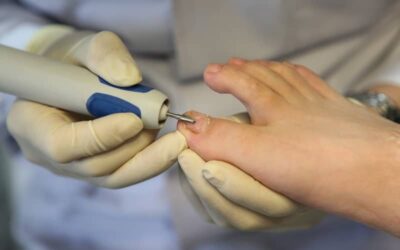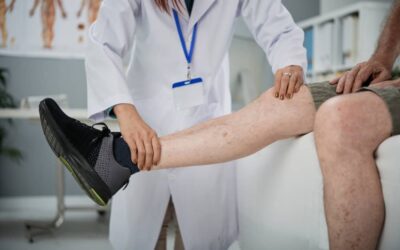Whether you’re an all-star athlete who twisted your ankle catching the winning touchdown for the state championship or a channel surfer whose feet got caught jumping up to grab a treat refill for your movie night, sprained ankles are a painful inconvenience. The big lingering question is when can I return to regular activity?
Just like there are a range of ways you can sprain your ankle, there’s not a one-size-fits-all answer to when you can return to activity after an ankle sprain. In this blog, we’ll talk about how to start the healing process, the factors that may affect your return to activity and signs that might indicate you are good to go.
Kickstart Your Healing
To return to sports and other physical activity, you will need to let your sprain fully heal.
Immediately following your sprain, using the RICE method will help to alleviate the initial symptoms and reduce swelling. RICE stands for rest, ice, compression, and elevation. Avoid putting your weight on the ankle. If necessary, you can take over-the-counter medications to help alleviate some of the pain and reduce swelling.
If your pain is significant, schedule an appointment with a local podiatrist.
Factors Affecting Return
As far as returning to activity, it’s impossible to give a blanket statement about how long the recovery process will take. A few different factors will come into play.
The Severity of the Sprain.
Sprains can occur in different degrees. More serious sprains require months of recovery time, while mild sprains may only take a couple of weeks. Sprains can fall into one of three categories for their severity.
- Grade 1 sprains are light. Recovery from this type of sprain should take no longer than three weeks.
- Grade 2 sprains are more intense than grade 1. Recovery from a grade 2 sprain will take anywhere from a month to a month and a half as the ligament is more damaged.
- Grade 3 sprains are the most severe. Ligaments are often not just stretched but also torn. Grade 3 sprains can even be accompanied by bone fractures, further complicating the healing process. Expect to be out for at least three months for a grade 3 sprain.
Sprains that are a grade 1 will probably heal on their own just fine. If you have a grade 2 or grade 3 sprain, going to see a foot and ankle specialist will be beneficial to your healing process.
Your Age and Fitness Level.
If you are a young and healthy individual who regularly exercises, you are more likely to bounce back quicker than someone who is older and a little less agile.
How Well You Follow Directions.
If you follow the regimen recommended to you by your foot & ankle specialists, you will recover quicker and more efficiently than if you try to get back to regular activity too soon. You might get frustrated if you feel like you are good to go and your doctor recommends waiting, but trust your doctor. He or she really just wants what is best for you.
You also want to follow the doctor’s orders if they give you some exercises to ease your ankle back into work. Keeping up with the recommended routine will help you to build back your strength. Returning to activity too soon will stop your healing progress.
Signs You May Be Ready to Return
Here are some milestones to look out for on your healing journey. As these happen, you are getting closer to getting back to normal.
- Your ankle is no longer swollen.
- You have a full range of motion
- You can walk on it without limping
- You have built your strength back up
- You can participate in your sport without pain
- Your doctor gives you the thumbs up
Another thing to note before you come back is the ankle helps assist your body with proprioception. Proprioception is your awareness of the movement and location of your body. When your ankle becomes injured, your ability to be aware of your movements is slightly inhibited. The receptors in the ligaments of your ankle don’t communicate with your brain well. This can lead to another injury easily. If you feel like your proprioception may still be off, talk to your local podiatry office. They can recommend some exercises to help regain your balance and spatial awareness.
Remember not to try to do too much too soon; you can cause another injury. Listen to your doctor.
And while you may be itching to be the designated snack selector again (your sister’s seaweed chips just aren’t cutting it) or rejoin your team instead of cheering them on from the sidelines, your ankle will thank you for taking the time to let it heal completely.



